
Hello and Namaste, everybody! Today we will discuss the Vivo V29e, the latest midrange entry from Vivo, launched at the price of Rs. 42,999 for the 8/256GB variant. With that pricing, the V29e is loaded with some impressive features such as an E4 120Hz AMOLED panel, a 64MP OIS camera, and an elegant design. In fact, Vivo Nepal is finally on track to reasonably pricing its devices as compared to its past records of overpricing!
So, is the Vivo V29e a strong contender in the NPR 40 to 50,000 price range? Find out about it in this Vivo V29e review!
Vivo V29e Review: Specifications
- Design: IP54-rated curved design with plastic frame and glass back
- Dimensions: 162.30 mm x 74.80 mm x 7.69 mm
- Weight: 190 grams
- Display: 6.67” E4 AMOLED Panel, 120Hz Refresh Rate, 1150 nits peak brightness, 100% DCI-P3 color gamut, 107% NTSC color saturation, 394 PPI pixel density
- Resolution: FHD+ (2400 x 1080)
- Chipset: Octa-core Qualcomm Snapdragon 695 5G (6nm)
- GPU: Adreno 619
- RAM: 8 GB LPDDR4x + 8 GB extendable
- ROM: 256 GB UFS 2.2
- OS & UI: Android 13 with Funtouch OS 13 on top
- Rear Camera: Dual Camera (64 MP OIS Primary + 8 MP Ultrawide)
- Front Camera: 50 MP Camera (Centre-aligned hole-punch cutout)
- Security: In-display fingerprint sensor, Face Recognition
- Sensors: Accelerometer, Ambient Light sensor, E-compass, Proximity sensor, Gyroscope
- Navigation: GPS, GLONASS, BeiDou, Galileo, QZSS
- Battery: 4,800 mAh Lithium-ion cell with 44W fast charging
- Connectivity: Dual SIM Dual Standby, 5G, Dual-band WiFi, Bluetooth v5.1, USB 2.0 (Type-C)
- Color Options: Forest Black, and Rose Gold
- Buy Vivo V29e here
Check the full specifications of Vivo V29e, HERE!
Vivo V29e Review:
Design
- Dimensions: 162.30 mm x 74.80 mm x 7.69 mm
- Weight: 190 grams
- Material: Plastic frame, glass back and front
Firstly, let’s start with the design of the phone given that Vivo is a design-centric brand. Even though the Vivo V29e’s design appears similar to the V27e, it nonetheless looks quite striking to me. The Rose Gold color variant that I have adds even more to the aesthetics.
Despite its slim profile, flat frames, and lightweight design, the phone feels good in hand, and premium as well, props to its glass build. Vivo has equipped the V29e with two LED flashes on the back – a regular one and another Aura ring light for night portraits. Additionally, it comes with an IP54 rating, so it will easily brush off some splashes of water and dust.
The V29e comes with a single-speaker setup, which is loud. However, a dual stereo speaker — which is not uncommon at this price point — would have been the icing on the cake. But, it is what it is.
Display
- 6.67” E4 AMOLED Panel, FHD+ (2400 x 1080)
- 120Hz Refresh Rate, 1150 nits peak brightness, 100% DCI-P3 color gamut, 107% NTSC color saturation, 394-pixel density
Moving on to the display, the Vivo V29e has a great screen for media consumption, offering sharp visuals. The colors may not be overly punchy, but the overall saturation is sufficient. Comparing it with other phones in this range, like the Samsung Galaxy A34, the latter one seems a bit more vibrant. However, if you prefer more boosted colors, adjustments can be made in the settings.

With the 120Hz refresh rate, scrolling and app switching are smooth and enjoyable. Vivo also provides you with an option to toggle between 60Hz and 120Hz, but unfortunately, you cannot choose 90Hz. Additionally, Vivo V29e also offers a smart switch option that switches between refresh rates to save you some battery. But, this feature is not optimized well enough, so I’d rather stick with the 120Hz option for a smoother day-to-day experience.
Camera
- Rear Camera: 64 MP OIS Primary + 8 MP Ultrawide
- Front Camera: 50 MP Camera
Daylight
In daylight conditions, the V29e produces punchy and detailed images with good dynamic range. The colors are vibrant and eye-pleasing, although close-up shots are something, the V29e struggles on. Comparing it with the Samsung Galaxy A34, the V29e tends to produce more vibrant colors, while the latter leans towards natural tones.
However, the Vivo V29e misses the mark in difficult situations while also struggling to focus on close-up subjects. Other than that, I am mostly satisfied with the camera performance of this phone.
Portrait
Talking of portrait shots, the results are on the vibrant end as well with this phone. Compared to the Samsung Galaxy A34, the Vivo V29e zooms in more on the subject with a better background blur. There is also some level of skin smoothening going on in here, which saves you the effort of having to edit your photos for social media.
Selfies
For selfies, the 50MP lens on V29e provides slightly boosted contrast, in comparison to the natural results of the Galaxy A34. It looks a bit overprocessed but in a good way. Additionally, the autofocus in the V series phones ensures sharp and decent selfies, though a subtle pinkish tone may be noticeable. All in all, the images look good and there isn’t anything I need to complain about per se.
Ultrawide
Vivo has given us an 8MP ultrawide unit, this time around. Which I think is a much better option than the useless 2MP depth/macro combo! Well, speaking of the ultrawide images itself, it’s about average, nothing much going around in here.
Lowlight
In low-light conditions, the Vivo V29e produces really bright images, in my opinion. Sometimes it felt as if the photos were way too bright, so most of the time I did not even switch the Night mode on. The colors are boosted in a similar fashion to the daylight shots.
Thanks to OIS capability, the V29e performs well in terms of noise reduction. Additionally, I found the glare control of this phone equally commendable. It also includes an Aura Ring Light flash that you can fiddle around with to produce images as per your liking.
While the photography aspect is on the brighter side, I just can’t say the same about the videography. The V29e lacks 4K video recording capability, which is a bummer. What’s more disappointing is that even at 1080p, the stabilization is not as smooth. I even noticed exposure hunting during the videos, unlike the relatively smoother videos on the Samsung Galaxy A34.
Performance
- CPU & GPU: Octa-core Qualcomm Snapdragon 695 5G (6nm) + Adreno 619
- Memory and Storage: 8 GB LPDDR4x + 256 GB UFS 2.2 + 8 GB extendable RAM
- OS & UI: Android 13 with Funtouch OS 13 on top
Moving on to performance, the V29e is equipped with the Qualcomm Snapdragon 695 5G chipset, a notable improvement over the V27e’s Helio G99 chip. Even though this is a two-year-old chipset, it performs well enough with minimal lags or stutters, in day-to-day usage.
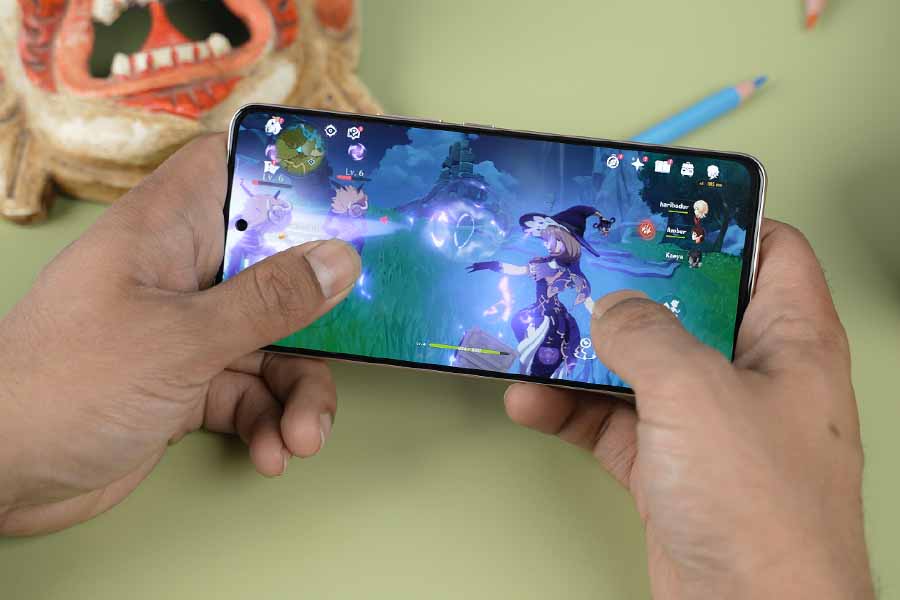
The gaming performance is decent as well, with smooth gameplay in Call of Duty Mobile at 60 FPS. However, PUBG Mobile is limited to Smooth + Ultra settings, lacking 60fps support. Meanwhile, relatively heavy games such as Genshin Impact can be played smoothly in 30 FPS mode. Something over than that would be asking too much from the phone. Similarly, the Vivo V29e offers an average of 70 FPS in high frame-rate games like Mech Arena.
All in all, this phone with the Snapdragon 695 chipset can keep up with your casual gaming needs. However, if you are looking for more gaming performance out of your phone, then the Samsung Galaxy A34 with the MediaTek Dimensity 1080 processor is a better option for you.
FunTouch OS with ‘Hot Games’?
The UI on the Vivo V29e is FuntouchOS 13, based on Android 13. Honestly, speaking I find the Funtouch OS a bit boring, even though it has “fun” in its name. The phone comes with minimal pre-installed apps, but Vivo has decided to include popular games and app recommendations this time around like in Realme, and Infinix phones. This can be a major turn-off and annoyance to some of you.
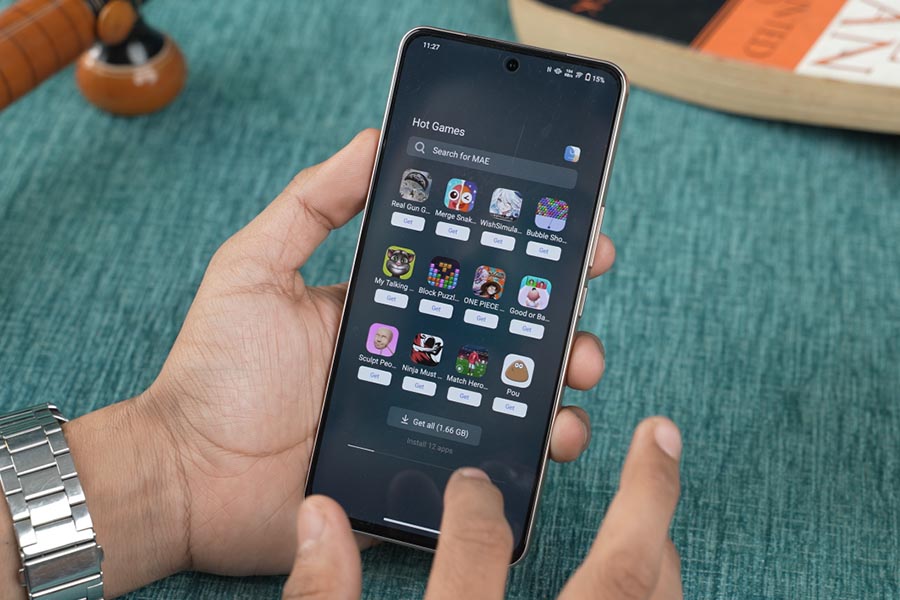
Meanwhile, in terms of software updates, Vivo’s policy is not explicitly mentioned on the official site, but their V-series phones generally receive two major Android updates. So, I am assuming that’s what this phone is getting as well, which is not bad by any means. But in comparison, Samsung offers 4 years of Android updates and 5 years of security commitment with the Galaxy A34!
Battery Life
- Battery: 4,800 mAh Lithium-ion cell
- Charging: 44W FlashCharge
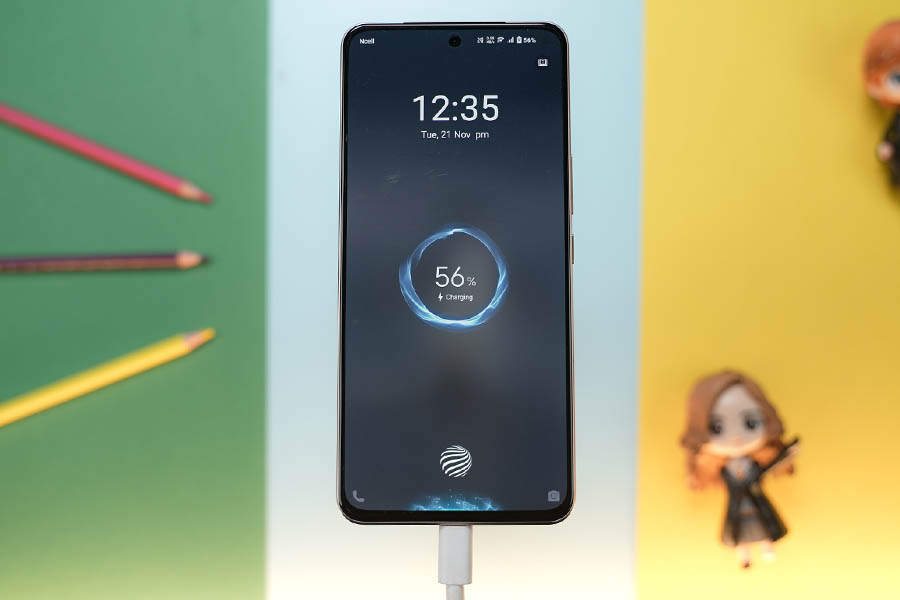
The V29e houses a 4800mAh battery, which falls on the higher end even by today’s standard. As a result, this phone easily lasts a day with moderate usage. Even though, the battery depletes a lot faster with heavy usage, the 44W charger included in the box comes in as a savior. In my test, this charger juices up the Vivo V29e to 50% in just 28 minutes, which is blistering fast!
Vivo V29e Review: Conclusion
While there are other options available, the V29e stands out with its commendable design, good AMOLED screen, ample storage with 256GB on the base variant, and fantastic cameras. Additionally, Vivo V29e is still a “cheaper” phone compared to something like the Samsung Galaxy A34 with a charger, back cover, and even screen protector included in the box.
Despite all the good things with this Vivo offering, there is room for improvement on the software front with longer updates and lesser bloatware. In conclusion, the Vivo V29e is a balanced midrange phone and offers good value for its price range. That wraps up our review of the Vivo V29e. I hope you found this review helpful!
Vivo V29e: Pros and Cons
Pros
- Elegant Design
- Good Quality E4 AMOLED panel
- Decent performance and camera
Cons
- FunTouch OS needs refinements
- Single Speaker











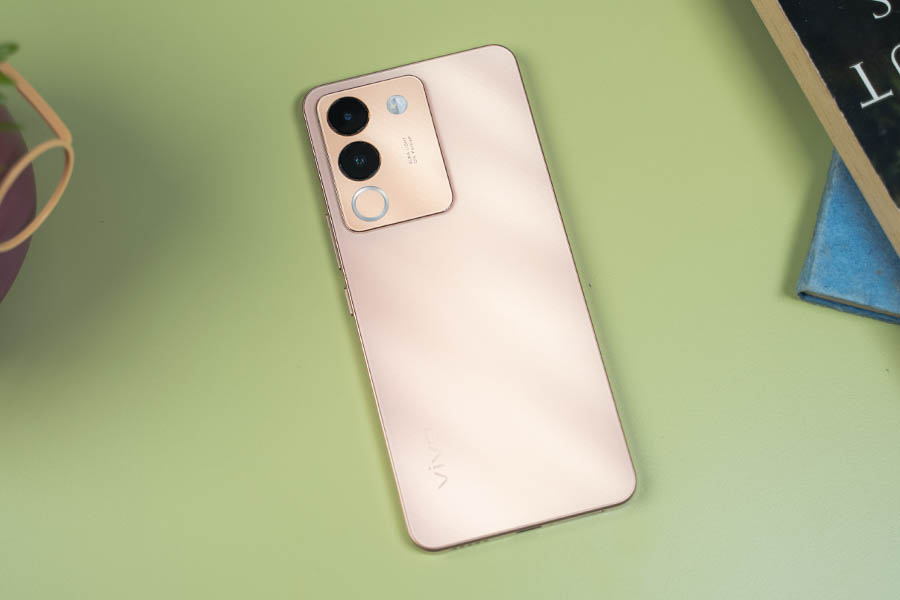
























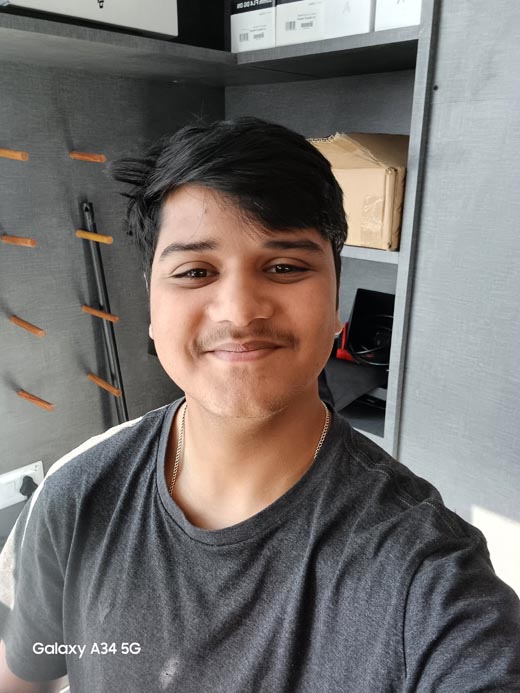







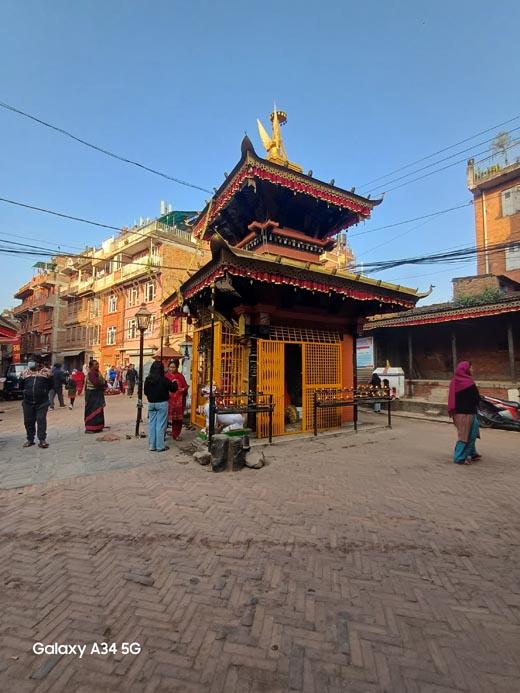






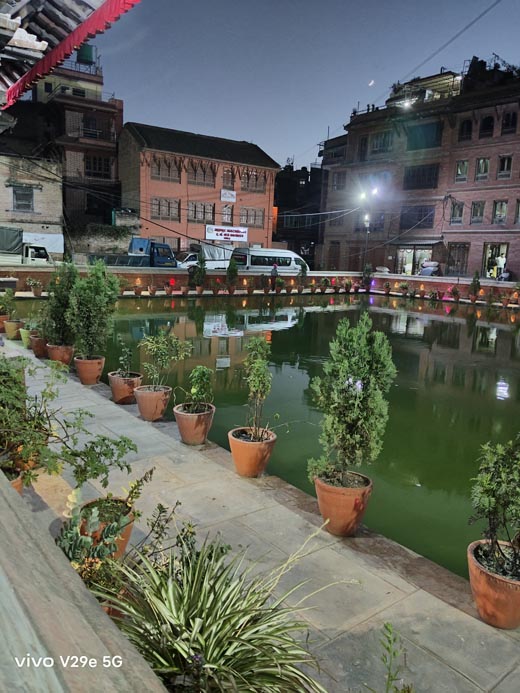












![Best Ultrabooks To Buy in Nepal 2024 [Updated] Best Ultrabook Laptops in Nepal 2023 - June Update](https://cdn.gadgetbytenepal.com/wp-content/uploads/2023/04/Best-Ultrabook-Laptops-in-Nepal-2023-June-Update.jpg)
![Best Gaming Laptops in Nepal 2024 [Updated] Best Gaming Laptops in Nepal 2023 - June Update](https://cdn.gadgetbytenepal.com/wp-content/uploads/2023/04/Best-Gaming-Laptops-in-Nepal-2023-June-Update.jpg)


![Best Mobile Phones Under Rs. 15,000 in Nepal [Updated] Best Phones Under 15000 in Nepal 2024 Budget Smartphones Cheap Affordable](https://cdn.gadgetbytenepal.com/wp-content/uploads/2024/03/Best-Phones-Under-15000-in-Nepal-2024.jpg)
![Best Mobile Phones Under Rs. 20,000 in Nepal [Updated] Best Mobile Phones Under NPR 20000 in Nepal 2023 Updated Samsung Xiaomi Redmi POCO Realme Narzo Benco](https://cdn.gadgetbytenepal.com/wp-content/uploads/2024/01/Best-Phones-Under-20000-in-Nepal-2024.jpg)
![Best Mobile Phones Under Rs. 30,000 in Nepal [Updated]](https://cdn.gadgetbytenepal.com/wp-content/uploads/2023/12/Best-Phones-Under-30000-in-Nepal-2024.jpg)
![Best Mobile Phones Under Rs. 40,000 in Nepal [Updated] Best Phones Under 40000 in Nepal 2024 Smartphones Mobile Midrange](https://cdn.gadgetbytenepal.com/wp-content/uploads/2024/02/Best-Phones-Under-40000-in-Nepal-2024.jpg)
![Best Mobile Phones Under Rs. 50,000 in Nepal [Updated] Best Phones Under 50000 in Nepal 2024 Smartphones Midrange](https://cdn.gadgetbytenepal.com/wp-content/uploads/2024/02/Best-Phones-Under-50000-in-Nepal-2024.jpg)
![Best Flagship Smartphones To Buy In Nepal [Updated] Best Smartphones in Nepal 2024 Flagship Premium Samsung Apple iPhone Xiaomi OnePlus Honor](https://cdn.gadgetbytenepal.com/wp-content/uploads/2023/09/Best-Smartphones-in-Nepal-2024.jpg)